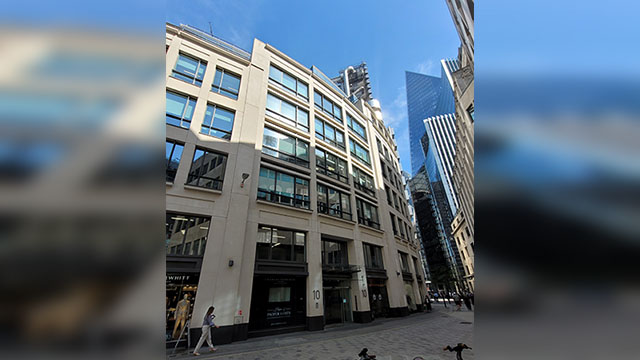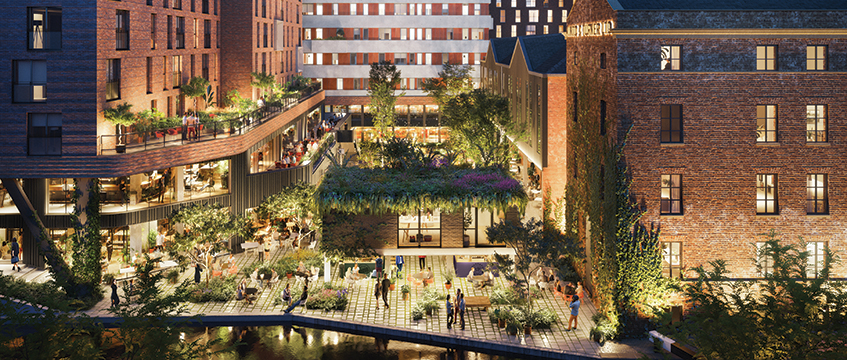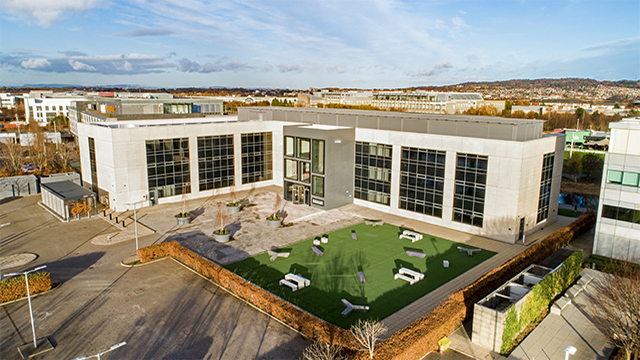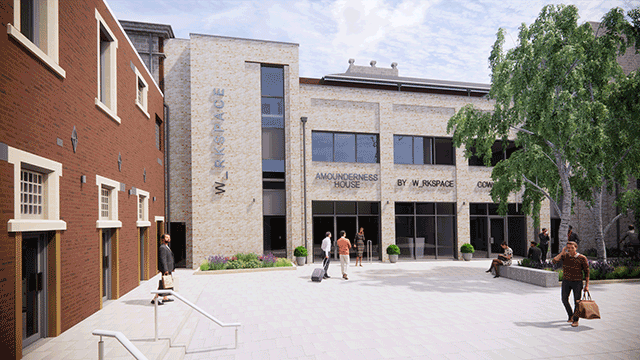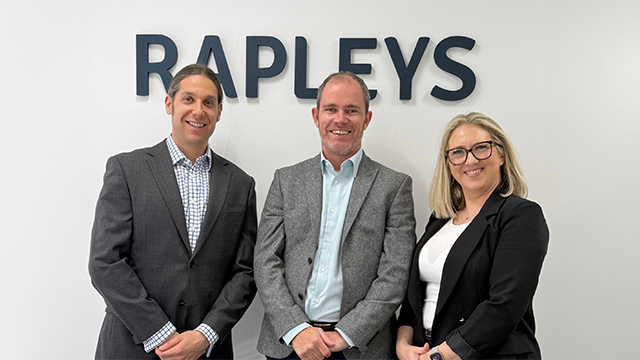COMMENT Social value is now one of the top priorities for developers when bringing forward schemes. Huge investments are being made to transform real estate as a force for good.
However, utilising residential and commercial development for the benefit of society isn’t a new concept.
It has long been non-negotiable for private developers when partnering with local authorities, especially in relation to large-scale regeneration projects. Although, until fairly recently, this was probably seen as a hurdle to overcome, rather than an integral rationale for the development.
The National Planning Policy Framework features a “social objective” – outlining how development should create strong, vibrant and healthy communities, with reference to factors such as design, open space and providing “a sufficient number and range of homes”.
The fact that social value is underpinned in the framework means local authorities can require developers to make commitments to deliver development that has social value – putting it front and centre when aiming to secure consent for schemes.
At an institutional level, social value is now firmly linked with the approach to environmental, social and governance. As part of the due diligence process, investors and funders are increasingly requiring information from developers as to how they plan to deliver on ESG and social value in order to secure financing.
While the growth of sustainability-linked loans in the UK real estate finance market has been well-documented, there are examples of developers securing funding facilities tied to social value targets, including mitigating social issues or achieving positive social outcomes.
Many developers are now fully embracing social value – confident in the belief that positively impacting communities, residents and society is not only the right thing to do but is also key to creating developments where people want to live and work. An outcome that can also have positive commercial implications for real estate businesses.
Integrating social value into a development
The approach to social value in development has changed dramatically over recent years.
One area where significant progress has been made is how social value can be integrated during all phases of the development cycle.
During the planning and build-out phases – often taking several years – some developers are adopting novel meanwhile uses on sites, reserving land for pop-up markets, for example.
Whereas before there may have been little thought given to social value in this development phase, there is now a realisation that what a developer does in this period can be critical to setting a positive tone and connecting with the community before a scheme is even built.
Genuine community engagement during the design process is also a powerful tool for developers when approaching social value. While this must be balanced against maintaining the viability of a project, meaningful engagement can enable developers to strengthen their relationship with the community and also better understand how to design a scheme to meets the needs of the local area and prospective residents.
The provision of green, open spaces is often a key part of the social value discussion.
In Sheffield, the city council recently opened an urban park within its £470m Heart of the City mixed-use development. Pound’s Park features green space, interactive water features, climbing frames and a sandpit. The site was initially earmarked for a multi-storey car park, hotel and office space.
However, following a public consultation, the council changed its plans to align with its “sustainable transport and environmental ambitions”.
While not generating any revenue, the park has revitalised this part of the city – breathing life into the wider scheme and showing what can be achieved by prioritising social value.
A similar impact can be seen in Manchester where HBD and Capital & Centric have partnered on Kampus – a £250m build-to-rent development on a former university site.
The 534-home scheme prioritises green and open space; however, the developers have also successfully cultivated a vibrant business community, attracting a range of businesses that border its central garden, including shops, cafés, bars and restaurants.
Adam Brady, executive director at HBD, says: “Social value is built into the fabric of everything we do as a business. We want to maximise the amount of positive impact we have on a community. This doesn’t mean wading in with our size nines – it means taking the time to understand the local community and stakeholders.
“Take a project like Kampus in Manchester, we engaged with the whole neighbourhood from the get-go to create something meaningful; our placemaking events are always programmed in collaboration with local independents, arts and charity groups.”
He adds: “We created the Bungalow, which is a space that local groups and start-ups can use completely free of charge. We don’t partner with big commercials and try to be thoughtful, genuine and authentic in everything we do. We don’t do ESG washing.”
I walked through Kampus earlier this summer. It was buzzing. People were dining al fresco; the bars were busy and there was an energy in the air.
The developers have demonstrated how effectively dedicating space and introducing a mix of uses within a scheme can create opportunities for social connection, not only for residents, but the wider public too.
Creating a lasting legacy
The provision of social value is not restricted to the physical aspects and design of a scheme. The initial construction process also offers developers the chance to create local employment opportunities and training.
New development can also act as the catalyst for growth at a regional, even national level.
Harworth’s Waverley scheme is a great case in point for the power of development. As Yorkshire’s largest ever brownfield mixed-use development, Harworth is regenerating the 740-acre former mining site to create a community that will feature up to 3,890 homes, a primary school, leisure and community facilities, as well as 310 acres of green open space.
Through the creation of a neighbouring Advanced Manufacturing Park, Harworth is also delivering 2.1m sq ft of commercial space. Tenants at the park already include the University of Sheffield, Airbus, Boeing, McLaren Automotive and Rolls-Royce.
This type of development is transformative from a social value perspective. It is expected to contribute £1bn to the local economy as it is built out, but it will no doubt have a long-term influence – bringing global businesses to Yorkshire and creating jobs for years to come.
Chris Davidson, regional director at Harworth, says: “Harworth has a long history at Waverley, and our commitment is reflected in the 16 years we spent completing a challenging and complete remediation of the former Orgreave coal mining site.
“As master developer, we created a shared vision for what we and local people wanted to deliver, and are pleased to now be at a stage where we are seeing the new community and local economy thrive as we deliver a truly sustainable community.”
He adds: “We’ve enabled many new homes for the area, attracting new residents, as well as creating high-skilled employment opportunities at the Advanced Manufacturing Park and delivering a country park creating opportunities for leisure, health and wellbeing. Alongside this is the ongoing delivery of important community and social infrastructure.
“In the next 18 months we have plans to build a new local centre, which will provide a central point for residents to come together and enjoy amenities such as cafés, restaurants, local shops and high-quality open spaces, as well as the new medical centre.”
“In total, 4,000 high-value jobs will be created at AMP – eight times that of Orgreave when the site shut down in 1990. Through this, the area has become one of the UK’s most exciting new green manufacturing hubs.”
Returning to Sheffield, Shoosmiths recently advised Henry Boot on the relocation of its head office to the Isaacs Building, which is part of the Heart of the City II. The flagship project is operating as a real Living Wage Zone – requiring businesses in the area to commit to paying the real Living Wage, often done through provisions in their leases.
These kind of measures show how real estate businesses are now not only looking to deliver social value through development, but also their own operations.
Together, this is enabling developers, operators, funders and investors to leave a lasting legacy. One that surpasses improving the physical landscape and is leading to the creation of thriving communities and economic prosperity – ultimately, changing lives for the better.
Kellie Hatton is a partner at Shoosmiths






